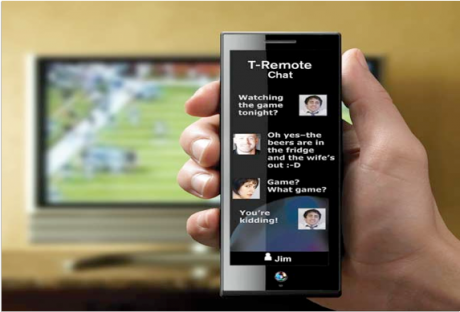Top 10 Video Content Properties by Unique Viewers
Google Sites, driven primarily by video viewing at YouTube.com, ranked as the top online video content property in May with 154.5 million unique viewers, followed by Facebook with 60.4 million, AOL, Inc. with 53.8 million, VEVO with 52 million and NDN with 46.5 million. Nearly 41 billion video content views occurred during the month, with Google Sites generating the highest number at nearly 14 billion, followed by AOL, Inc. with 839 million. Google Sites had the highest average engagement among the top ten properties.
| Top U.S. Online Video Content Properties Ranked by Unique Video Viewers May 2013 Total U.S. – Home and Work Locations Content Videos Only (Ad Videos Not Included) | |||
| Property | Total Unique Viewers (000) | Videos (000)* | Minutes per Viewer |
| Total Internet : Total Audience | 182,217 | 40,953,776 | 1,247.9 |
| Google Sites | 154,537 | 13,958,260 | 436.7 |
| 60,429 | 727,383 | 26.1 | |
| AOL, Inc. | 53,845 | 838,934 | 64.2 |
| VEVO | 52,024 | 591,209 | 37.9 |
| NDN | 46,457 | 505,339 | 78.5 |
| Microsoft Sites | 45,179 | 541,503 | 36.9 |
| Viacom Digital | 43,676 | 415,654 | 41.2 |
| Yahoo! Sites | 43,625 | 342,432 | 72.7 |
| Amazon Sites | 33,740 | 163,817 | 17.8 |
| Turner Digital | 32,975 | 276,951 | 41.7 |
Top 10 Video Ad Properties by Video Ads Viewed
Americans viewed 15.8 billion video ads in May, with BrightRoll Platform ranking #1 with 2.6 billion ad impressions. Google Sites came in second with nearly 2.6 billion ads, followed by LiveRail.com with 2.1 billion, Adap.tv with 2.1 billion, Hulu with 1.7 billion, Specific Media with 1.4 billion and TubeMogul Video Ad Platform with 1.2 billion. Time spent watching video ads totaled 6 billion minutes, with BrightRoll Platform delivering the highest duration of video ads at 1.3 billion minutes. Video ads reached 53 percent of the total U.S. population an average of 96 times during the month. Hulu delivered the highest frequency of video ads to its viewers with an average of 71.
| Top U.S. Online Video Ad Properties Ranked by Video Ads* Viewed May 2013 Total U.S. – Home and Work Locations Ad Videos Only (Content Videos Not Included) | ||||
| Property | Video Ads (000) | Total Ad Minutes (MM) | Frequency (Ads per Viewer) | % Reach Total U.S. Population |
| Total Internet : Total Audience | 15,844,581 | 6,042 | 96.5 | 53.1 |
| BrightRoll Platform** | 2,624,509 | 1,340 | 16.2 | 52.5 |
| Google Sites | 2,553,208 | 233 | 23.7 | 34.9 |
| LiveRail.com† | 2,128,167 | 742 | 23.9 | 28.9 |
| Adap.tv† | 2,098,981 | 1,000 | 15.8 | 43.1 |
| Hulu | 1,666,610 | 653 | 71.3 | 7.6 |
| Specific Media** | 1,411,102 | 552 | 12.5 | 36.5 |
| TubeMogul Video Ad Platform† | 1,225,897 | 349 | 13.5 | 29.4 |
| Tremor Video** | 882,522 | 459 | 11.6 | 24.5 |
| Videology† | 632,899 | 262 | 8.1 | 25.1 |
| AOL, Inc. | 630,551 | 296 | 12.1 | 16.9 |
**Indicates video ad network
†Indicates video ad exchange/DSP/SSP
Top 10 YouTube Partner Channels by Unique Viewers
The May 2013 YouTube partner data revealed that video music channel VEVO maintained the top position in the ranking with 50.2 million viewers. Fullscreen held on to the #2 position with 36.5 million viewers, followed by Maker Studios Inc. with 32.4 million, Warner Music with 32 million and ZEFR (formerly MovieClips) with 27.5 million. Among the top 10 YouTube partners, Machinima demonstrated the highest engagement (63 minutes per viewer), followed by Maker Studios Inc. (48 minutes per viewer). VEVO streamed the greatest number of videos (562 million), followed by Maker Studios Inc. (433 million).
| Top YouTube Partner Channels* Ranked by Unique Video Viewers May 2013 Total U.S. – Home and Work Locations Content Videos Only (Ad Videos Not Included) | |||
| Property | Total Unique Viewers (000) | Videos (000) | Minutes per Viewer |
| VEVO @ YouTube | 50,238 | 561,631 | 36.1 |
| Fullscreen @ YouTube | 36,486 | 284,829 | 23.8 |
| Maker Studios Inc. @ YouTube | 32,371 | 432,854 | 47.5 |
| Warner Music @ Youtube | 31,956 | 176,509 | 17.7 |
| ZEFR @ YouTube | 27,497 | 130,772 | 13.5 |
| The Orchard @ YouTube | 24,313 | 90,023 | 10.4 |
| Machinima @ YouTube | 21,371 | 349,628 | 62.6 |
| UMG @ YouTube | 19,838 | 68,297 | 9.9 |
| BroadbandTV @ YouTube | 16,451 | 112,491 | 21.6 |
| SonyBMG @ YouTube | 16,250 | 44,173 | 8.3 |
Other notable findings from May 2013 include:
- 84.8 percent of the U.S. Internet audience viewed online video.
- The duration of the average online content video was 5.6 minutes, while the average online video ad was 0.4 minutes.
- Video ads accounted for 27.9 percent of all videos viewed and 2.6 percent of all minutes spent viewing video online.
No Time? No Resources? Not sure where to start?
Call Jeff at 888-712-8211 today!
VMakers - Video simplified.
Trusted by Disney, Warner Bros, NBC, Paramount, CBS and ABC.info@VMakers.com










